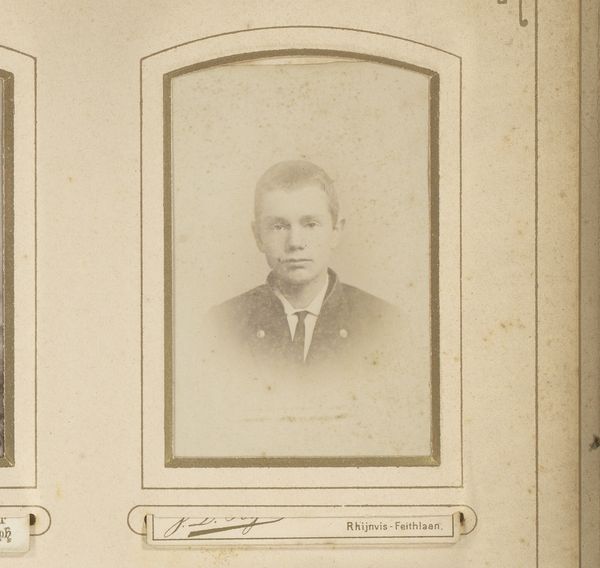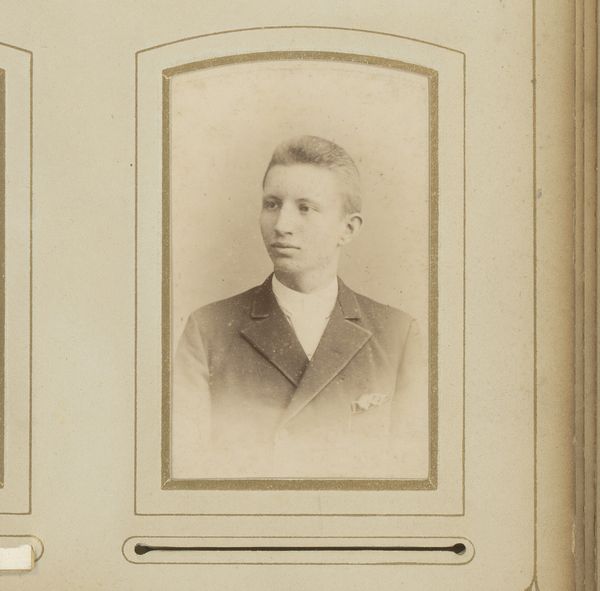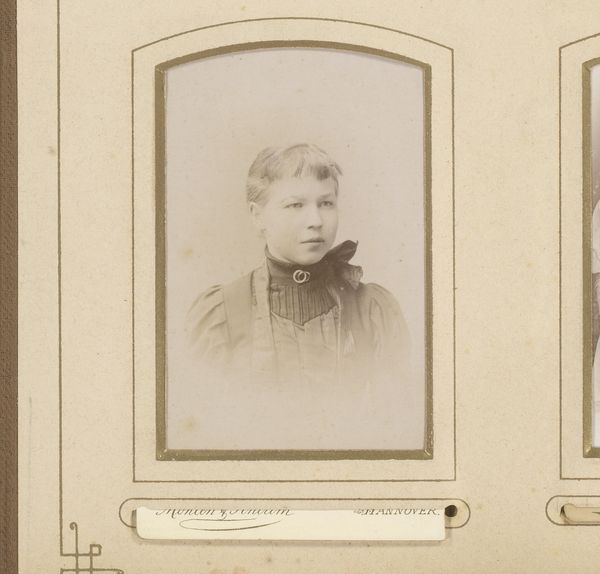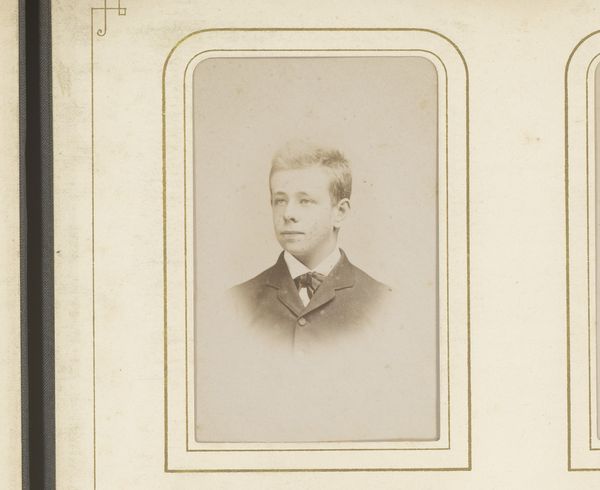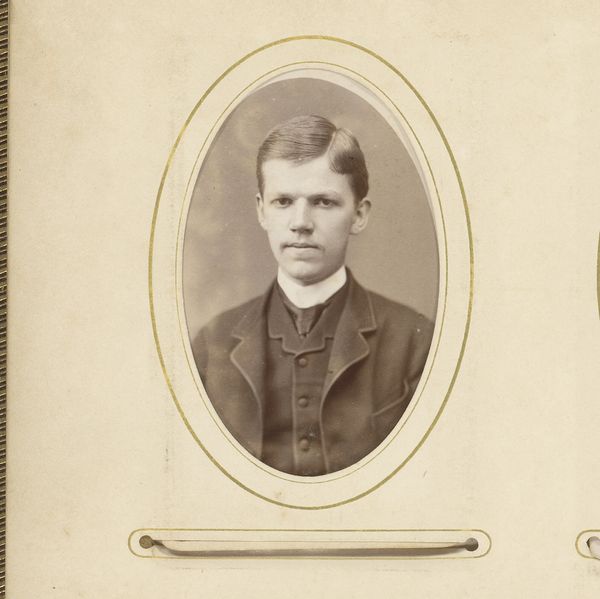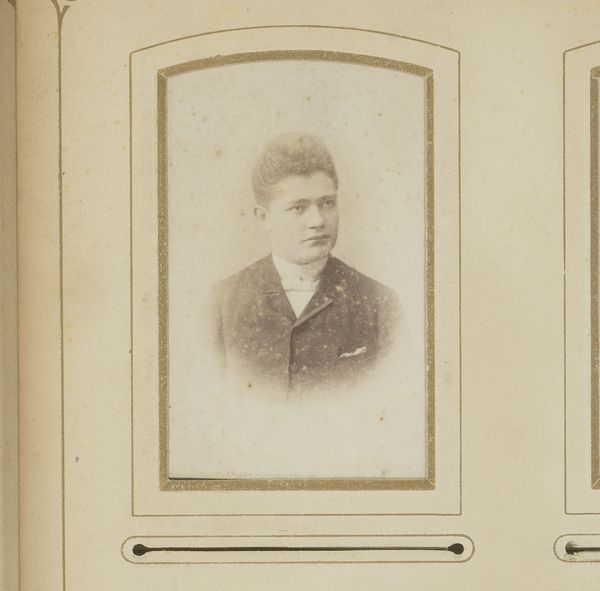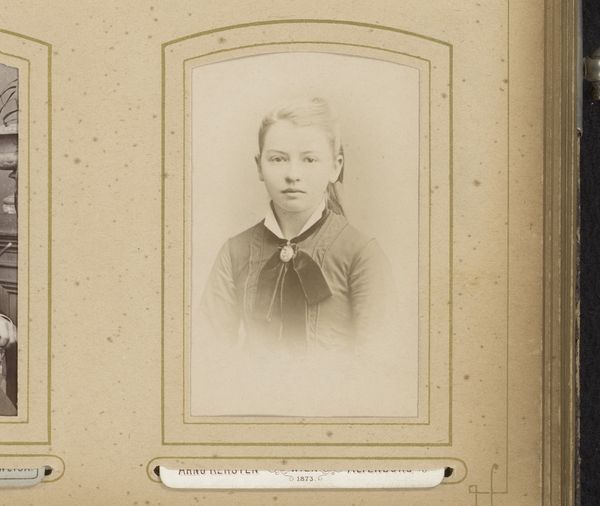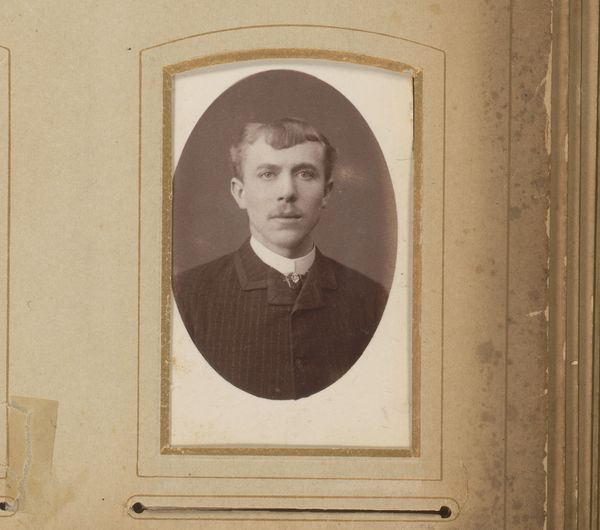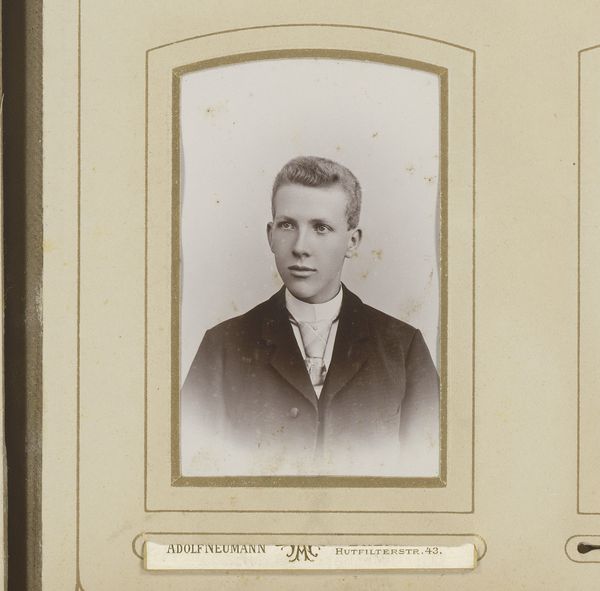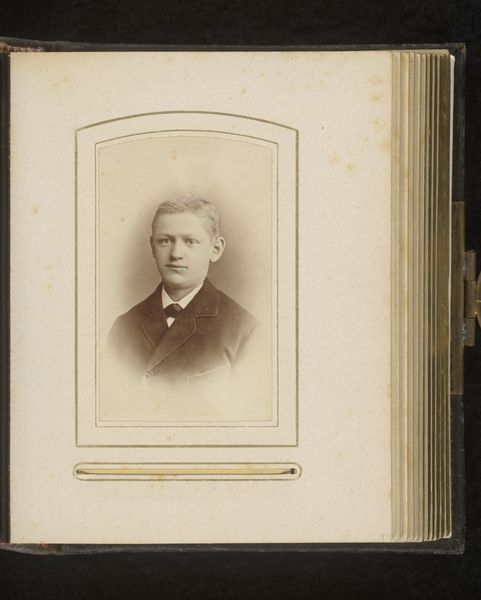
photography
#
portrait
#
16_19th-century
#
pictorialism
#
photography
#
historical photography
#
19th century
Dimensions: height 82 mm, width 53 mm
Copyright: Rijks Museum: Open Domain
Editor: We're looking at "Portret van een jongeman," or "Portrait of a Young Man," a photograph by Petrus Johannes Bieseman, dated between 1884 and 1913. It has a faded quality, almost dreamlike, and the young man's gaze feels very direct, but distant. What symbolic meanings can we find in a piece like this? Curator: The uniform the young man wears speaks volumes. The high collar, the structured jacket, the small details: all these represent discipline, order, perhaps even nascent societal expectation. It reflects a period obsessed with control and visible symbols of belonging. Does it make you consider his inner life versus what he outwardly projects? Editor: Absolutely! It’s almost as if the uniform is a mask. What else stands out to you? Curator: Notice the sepia tone, typical of photography of the time, but beyond mere technicality, this color imbues a sense of the past. Sepia often conveys nostalgia, a connection to cultural memory, wouldn’t you agree? His averted gaze – it doesn’t quite meet ours fully, right? – hints at a hidden world. What’s not being said becomes important. Editor: Yes, there's a fragility to it despite the formality. Perhaps that contrast speaks to the constraints of youth and societal pressures at the time. Curator: Precisely. And think about how the cultural perception of youth shifted during this period. It moved from seeing children as miniature adults toward valuing adolescence as a formative stage, vulnerable and needing protection. The boy's image then is ripe with that tension, visually signifying a societal shift still in motion. The symbol then transforms to reflect continuity, connecting us to societal memories across time. Editor: It's amazing how much symbolism is packed into what seems like a simple portrait. I definitely have a richer understanding of the cultural context now. Thanks! Curator: And for me, the process unveils not just history but also echoes of modern anxieties and questions around identity, showing the timeless power of symbols.
Comments
No comments
Be the first to comment and join the conversation on the ultimate creative platform.
